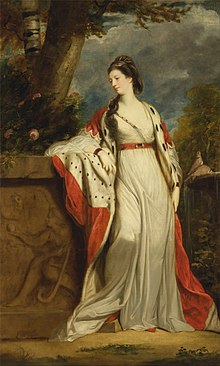
The Royal Society for the Encouragement of Arts, Manufactures and Commerce (RSA), also known as the Royal Society of Arts or more commonly by its acronym RSA, is a London-based organisation committed to finding practical solutions to social challenges.
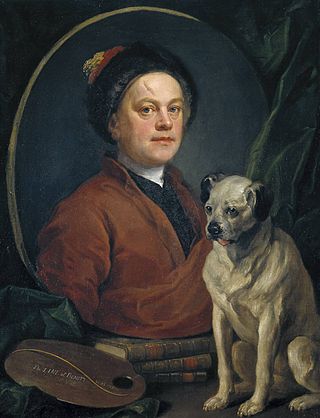
William Hogarth was an English painter, engraver, pictorial satirist, social critic, editorial cartoonist and occasional writer on art. His work ranges from realistic portraiture to comic strip-like series of pictures called "modern moral subjects", and he is perhaps best known for his series A Harlot's Progress, A Rake's Progress and Marriage A-la-Mode. Knowledge of his work is so pervasive that satirical political illustrations in this style are often referred to as "Hogarthian".

Joseph Nollekens R.A. was a sculptor from London generally considered to be the finest British sculptor of the late 18th century.
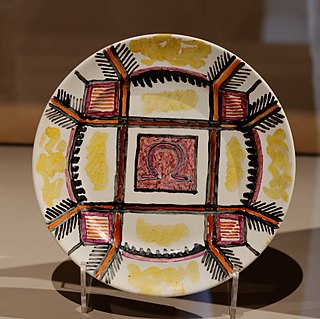
The Omega Workshops Ltd. was a design enterprise founded by members of the Bloomsbury Group and established in July 1913. It was located at 33 Fitzroy Square in London, and was founded with the intention of providing graphic expression to the essence of the Bloomsbury ethos. The Workshops were also closely associated with the Hogarth Press and the artist and critic Roger Fry, who was the principal figure behind the project, believed that artists could design, produce and sell their own works, and that writers could also be their own printers and publishers. The Directors of the firm were Fry, Duncan Grant and Vanessa Bell.

The Royal Scottish Academy building, the home of the Royal Scottish Academy, is situated on The Mound in the centre of Edinburgh, was built by William Henry Playfair in 1822-6 and extended in 1831-6 for the Board of Manufactures and Fisheries. Along with the adjacent National Gallery of Scotland, their neo-classical design helped transform Edinburgh into a modern-day Athens of the North.
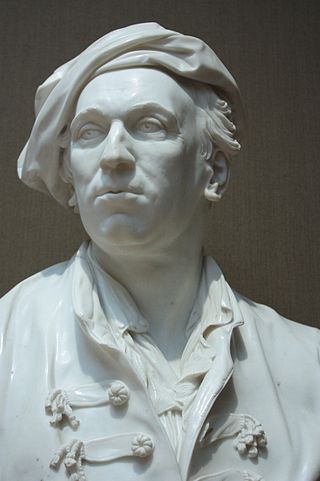
Louis-François Roubiliac was a French sculptor who worked in England. One of the four most prominent sculptors in London working in the rococo style, he was described by Margaret Whinney as "probably the most accomplished sculptor ever to work in England".

William Shipley was an English drawing master, social reformer and inventor who, in 1754, founded an arts society in London that became The Royal Society of Arts, or Royal Society for the Encouragement of Arts, Manufactures & Commerce (RSA).

The Art of the United Kingdom refers to all forms of visual art in or associated with the United Kingdom since the formation of the Kingdom of Great Britain in 1707 and encompasses English art, Scottish art, Welsh art and Irish art, and forms part of Western art history. During the 18th century, Britain began to reclaim the leading place England had previously played in European art during the Middle Ages, being especially strong in portraiture and landscape art.

Sir Henry Cole FRSA was a British civil servant and inventor who facilitated many innovations in commerce and education in the 19th century in the United Kingdom. Cole is credited with devising the concept of sending greetings cards at Christmas time, introducing the world's first commercial Christmas card in 1843.
Events from the year 1849 in art.
Events from the year 1761 in art.
Events from the year 1754 in art.

David Martin was a Scottish painter and engraver. Born in Fife, he studied in Italy and England, before gaining a reputation as a portrait painter.

The Society of Artists of Great Britain was founded in London in May 1761 by an association of artists in order to provide a venue for the public exhibition of recent work by living artists, such as was having success in the long-established Paris salons. Leading members seceded from the society in 1768, a move leading directly to the formation of the Royal Academy of Arts. The society was dissolved 1791 after years of decline.
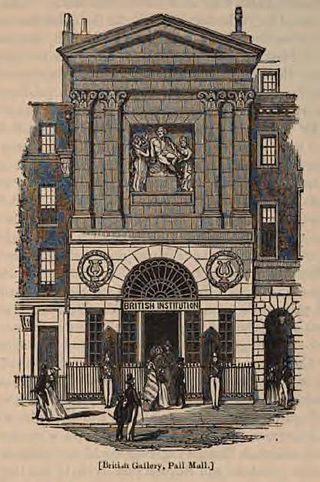
The British Institution was a private 19th-century society in London formed to exhibit the works of living and dead artists; it was also known as the Pall Mall Picture Galleries or the British Gallery. Unlike the Royal Academy it admitted only connoisseurs, dominated by the nobility, rather than practising artists to its membership, which along with its conservative taste led to tensions with the British artists it was intended to encourage and support. In its gallery in Pall Mall the Institution held the world's first regular temporary exhibitions of Old Master paintings, which alternated with sale exhibitions of the work of living artists; both quickly established themselves as popular parts of the London social and artistic calendar. From 1807 prizes were given to artists and surplus funds were used to buy paintings for the nation. Although it continued to attract members and visitors, in 1867, when the lease on its quarters expired, instead of renewing the society wrapped up its affairs.
The St Martin's Lane Academy, a precursor of the Royal Academy, was organised in 1735 by William Hogarth, from the circle of artists and designers who gathered at Slaughter's Coffee House at the upper end of St Martin's Lane, London. The artistic set that introduced the Rococo style to England was centred on "Old Slaughter's" and the drawing-classes at the St. Martin's Lane Academy were inextricably linked in the dissemination of new artistic ideas in England in the reigns of George II and George III.

Sigismunda mourning over the Heart of Guiscardo, fully titled Sigismunda mourning over the Heart of Guiscardo, her murder'd Husband, is an oil painting by British artist William Hogarth. Finished in 1759, it was the principal piece of the eight works he displayed in an exhibition in 1761. It was the final and most ambitious of his attempts to secure for himself a reputation as a history painter. It depicts a dramatic moment in one of the novelle in Boccaccio's Decameron. While Hogarth had expected this work to be acclaimed as a masterpiece of dramatic painting, the work was met with criticism and ridicule. In the catalogue of the exhibition of Hogarth's works at the Tate Gallery in 2007, the criticism was described as "some of the most damning critical opprobrium the artist ever suffered".

Philippe Mercier was an artist of French Huguenot descent from the German realm of Brandenburg-Prussia, usually defined to French school. Active in England for most of his working life, Mercier is considered one of the first practitioners of the Rococo style, and is credited with influencing a new generation of 18th-century English artists.
The Society for the Encouragement of Arts, Manufactures and Commerce, founded in 1754, was the precursor of The Royal Society for the Encouragement of Arts, Manufactures and Commerce now more usually known as the RSA. The original Society gained the Royal prefix in the Edwardian era, when the Prince of Wales was its President. Its primary aim was to stimulate industry through the awarding of prizes.
